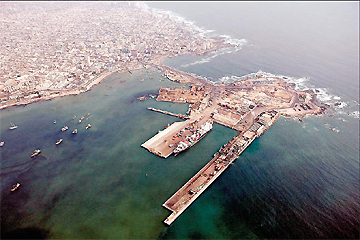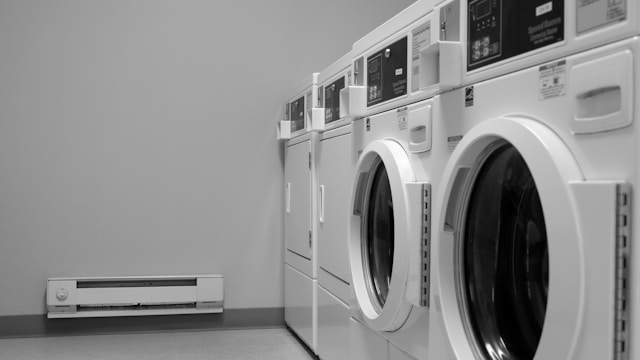The coastal zone stands out for having a vertiginous growth rhythm, backed up by the consolidation of the port of Iquique a entry and outgoing of some products of the Zona Franca, recognized as a regional business and tourism platform.
On the contrary, an economy in a minor scale is developed towards the interior, with survival farming activities, as well as tourist projects intending to seize the natural and patrimonial potentiality of the region. The new mining exploitations have also turn on in a meaningful pole of development in this region, backed up by important development projects of private character, that has not only left considerable resources, but, also, generate a good amount of employment for the regional population.
Mining
With out any doubt, the sector that has had a permanent growth during the last time in the Region of Tarapaca is, mining. Although some decades ago the saltpetre mining corporations dominated the regional economic scenery, the zone had to face a vertiginous turn in its exploitations, being copper, nowadays, the main metallic mineral extracted from the Andes Ranges.
Standing out the deposits of Quebrada Blanca, Cerro Colorado and Doña Ines from Collahuasi.
The alter is one of the projects of greater magnitude that begin to prepare during the decades of the nineties, with the first satellite test drillings and the drillings of some near sectors of this zone, located at 180kms from Iquique.
Its exploitation is carried out on the surface, covering three copper mineral deposits. In the process of extraction and treatment of its minerals modern technology is used, which has eased up the increase of its production: the latter, during 2006, reached 380.000 metric tons of copper concentration.
It has two working areas: the Andean and port.
The first is conform by three mines for the extraction of the mineral, in the high plateau zone. The port zone is located 60km from Iquique, where copper is boarded towards its destiny.
Regarding the non metallic mining, it is based in the saltpetre exploitation, as well as in the sodium chlorate (common salt) and diatomite (used in the manufacturing of dynamite and industrial filters). Besides, there are deposits of gold and silver of a minor magnitude.
Fishing activities
It constitutes one of the main economical activities of the region, centred principally in the port of Iquique. In this same city there are some of the greater fish meal and fish oil treatment plant of the country, since the crafty as well as the industrial extraction of marine resources is very intense.
Derived from this development, we can also identify in the region canning and freezing manufacturers.
Agriculture
The extreme dryness, the saltiness of the soils and the enormous thermal oscillation in some points of the region makes difficult the development of agricultural activities of great magnitude. The scarce farmable areas take advantage of the exiguous water flows existing in the region.
Coastal valleys from the Range and oasis allow the cultivation of some tropical fruits, such as mango and guayaba, as well as olives, lemons, legumes and cereals.
Concerning cattle raising, it is also developed in a minor scale. There is a small amount of ovine and bovines in the Pampa del Tamarugal and another, more considerable of auquenids in the high plateau area.
Services
The central point of the development of the region is the impulse that during the last decades has been given to activities related with commerce and tourism. We cannot forget the importance of the Zona Franca of Iquique in the strengthening of the regional economy, since is the main commercial point of entry and departure of important products of the Cono Sur. Also is the port of Iquique, commercialization centre of diverse assets.
Stands out, resides, in the last times, the emphasis given to the development of high quality tourist activities, which can be perceived in the quantity of employed people in this area, as well as the governmental politics supporting the tourism in the region.
Zona Franca de Iquique
Inaugurated un 1975, the Zona Franca de Iquique (Zofri) is on of the main business centres of our country and the most important duty free zone of South America. Its mission is to impulse the regional economy and strengthens the main activities supporting the regional economy.
Near 1.600 users and 1.650 enterprises are moving this real economical motor of the Region of Tarapaca, that has as a principal characteristic a regime of tax and customs reliefs, easing up the exchange of free products free of taxes and tariffs.
During 2007, the sales of the zona franca reached up to 2.643,9 million dollars; out of which the majority are done internally and to the neighbouring countries, Such as Bolivia, Peru and Paraguay.
Regarding imports, we must stand out that half of the products comes from Asia China and Japan., mainly.
Accordingly to the law, the 15% of the net income of Zofri are destined to the Municipalities of the region and of the Arica y Parinacota region. This resources must be destined exclusively to investments projects, for this reason the thriving and growth of this duty free zone not only have an influence in Iquique, city that not only lodges its installations, but rebounds in the whole zone growth. Thus, thanks to the economical contribution, an improvement has been implemented in public works in the villages of the inland.
According to indicators coming from the same society, the Zofri represented during 2005 the 15% of the total budget of the community of Alto Hospicio, the 20% of the investment budget of the community of Colchane and the 60% of the resources oriented to social infrastructure.
Also is important to stand out the quantity of people that have their working source in this place; more than 20.000 workers have employment related directly or indirectly constituting almost the 20% of the working mass of the communities of Iquique and Alto Hospicio.
Port of Iquique
This port terminal is located in front of the terrains of what was before the Isla Serrano. Its installations reach 33 hectares that include the connexion to firm land seawall (from the so called island) up to boarding, stocking and cargo storage areas.
Historically, the port of Iquique has been used for the departure of exports of raw material provided by the region. First was the guano (seabird excrement) and later the saltpetre. Nevertheless, alter the crisis that affected the commercialization of this product, it became a sounding decrease of this port activity.
During the decade of the thirties, there were several the efforts for rising an adequate port, carrying out some infrastructure transformations. In this way, the government took over this task and became to have a vital role in the positioning and strengthening of this coastal setting that with the creation of Zofri, recovered the vital goal that has in the regional economy. Actually, the port operations are a result of the alliances between the public and the private sectors.
Even though the State is the owner of the entire infrastructure, in each Terminal operate privates that are in charge of the docking, unloading and services to the ships that dock in this zone of the country. One of the main advantages of this port is its growth capacity, which is not restricted by the city.
The expansion possibilities of its installations are many; including, there is a planning for the future for its piers enlargement and the increase of the deepness of its waters, for bigger ships traffic.
Its location is considered strategically, since is an excellent point of contact with the central zone of South America and with the Asian-Pacific basin. Numbers point out that during the period January-November, 2006, the total tonnage transferred at the port of Iquique reached the important number of 2,090,046 tons. At the same time, 578 ships docked in the area, including ships with a 9 meter draft.








